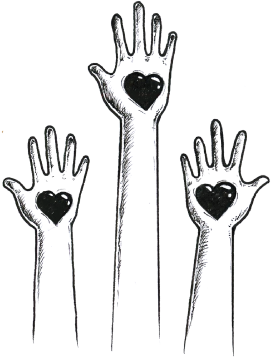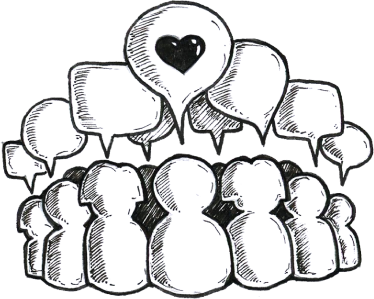August 14, 2017
Why companies should not sell or give technology intended for individual and household use to NGOs
contributor: Susan Davis
When I worked at CARE, I used to get these calls about once a month. “Hi, I’m Bob! I have invented a water treatment product that will save lives, and I want CARE to test it / buy it / give it away.” It’s not just entrepreneurs or innovators, but also representatives of multi-national consumer product corporations who you think would know better than a not-for-profit how to market products. My colleagues at other organizations have gotten similar calls.
It is infeasible to install piped (safely managed) water services for everyone in the world immediately. And stored water is often contaminated. To fill the gap, for-profit companies have created many products – such as water filters or flocculant/disinfectants – and then handed off the work of promotion to governments or non-profit organizations. (Just a few examples: Procter & Gamble’s PUR, Vestergard Fransen’s Lifestraw, Kohler’s Clarity, Medentech’s Aquatabs, WaterGuard, colloidal silver pots, and biosand filters.) This often involves giving the products to families, combined with some efforts at health-based behavior change. Despite years of this, boiling is still the only water treatment method that many people do regularly.
I’ve been thinking about these challenges for a few years, especially after seeing a presentation by Steve Luby, where he asked these hard questions:
- Is household water treatment a failed strategy?
- Is it a fundamentally bad idea to expect the poorest people in the world to set up a personal water treatment facility in their home?
In this article, I’ll summarize some of the reasons we need to ask these hard questions. I’ll focus on products that deal with water quality, but these points are relevant to many products that are intended for use by individuals.
Products must be used – and used correctly – to be useful
Almost any effort to encourage water treatment involves changes to habits and mindsets acquired over a lifetime. And those are notoriously hard to change. Poor children are those who suffer most from waterborne disease, yet there is a low demand for improved water quality, especially among the poor. Not-for-profit organizations thus must create demand. To do so, they usually focus on health benefits, assuming improved health is a motivator, but many studies show it is not. (For example, see “Health in our hands, but not in our heads: understanding hygiene motivation in Ghana.”) Furthermore, even if people treat their water correctly and consistently, most will still suffer from diarrhea caused by other factors (e.g., poor handwashing or food preparation). Thus, the health benefits may not be convincing.
Any water treatment product must be used consistently and correctly forever to lead to improved health. Yet many programs have reported strong initial use that then decreases over time. Faced with limited time and money, competing priorities, and an uncertain risk of the consequences of not using the product, householders easily stop using it – or won’t replace it, especially if they grew up on untreated water.
Manufacturers need to understand and respond to user needs and demands
The affordable (or free) solutions for treating water have little “aspirational” appeal. “Few householders are proud of using products as mundane as bleach or empty plastic bottles to treat their water, and many completely reject the practices since they do not improve water aesthetics but make it warmer or taste and smell worse.” A for-profit company should do its own market research, or pay an expert to do this. Most non-profits don’t have the skill sets – or funds – to do this.
Products that can make water look, taste and smell better are often unaffordable to potential users who make (USD) $1 – $2 per day and credit is often unavailable. All existing products require consumers to acquire, use, maintain and replace exhausted supplies. This doesn’t mean that giving products away will get people to use or replace them.
In addition, giving away one-off products can be ethically problematic. With a filter, how does the user know when you need a replacement? It’s possible that people will continue use a filter when it’s not safe.
There’s more to it than the product
Giving away products can distort local markets, as described starkly in Development Malpractice In Ghana. Other barriers and enablers that have been identified include the need for ongoing user guidance on safe use, maintenance, and replacement of products; resource availability; standards, certification and regulations; integration and collaboration; and market strategies.
Better way forward
The UN’s Sustainable Development Goal (SDG) 6 focuses on safely managed water services for all, but until that can be achieved, there might be a role for water treatment. However, a better way forward is needed. That way should treat users with respect and understand their desires and needs beyond health.
Businesses that manufacture water treatment products should operate like businesses. They know better how to create demand and support supply chains. If they work with not-for-profits rather than selling directly to customers, they should choose organizations that are good at market-based approaches. And they should use their expertise honed in commercial enterprise to help to strengthen the business skills of those organizations. They should also consider customer-focused design and continue to collect and respond to feedback on ease of use, maintenance, and affordability. Ideally, products should take all the effort out of water treatment. I don’t have to think about treating my water, why should anyone else?
Resources
Carbon for Water is engaged in a loopy funding scheme and offers a lousy public health solution Kevin Starr
Household Water Treatment: A failed public health strategy? Steve Luby
Reservations about water quality interventions
WHO International Scheme to Evaluate Household Water Treatment Technologies, Results of Round 1
Systems Thinking Builds Markets
tags : behavior change, business model, marketing





15-08-2017 05:31:11 AM
Henk Holtslag says: